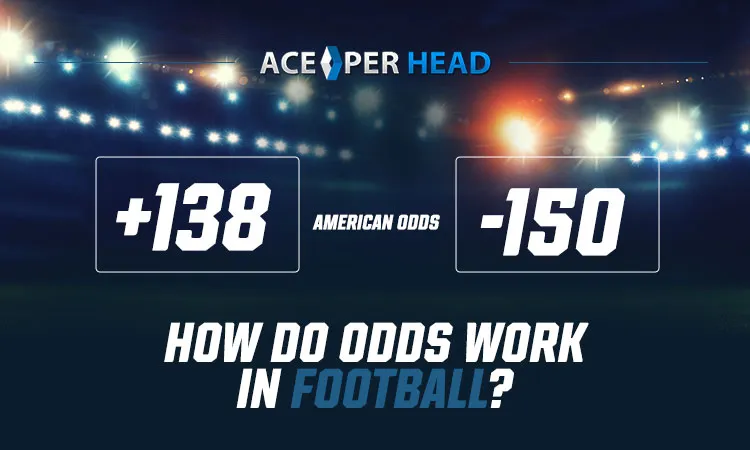
American football is easily the most popular sport in the US, but it also has international fans. About390 million to 410 millionpeople across the globe enjoy this sport. This makes sense since there are 32 teams to cheer for when you follow the NFL, so there’s something for everyone!
Because of its popularity, millions of Americans bet on NFL season every year. But how do odds work in football? How can you make money as a bookie by working with football bettors?
Read here to answer these questions by learning the basics of football odds.
How Do Odds Work in Football?
Sports betting odds aim to find the hypothetical likelihood of a certain event’s outcome. These statistically-motivated figures come from an assessment of previous game scores, wins vs losses, and new factors that may contribute to the team’s success or failure (new players, player injuries, coach turnaround, etc).
Odds are used for two things:
- Setting well-constructed lines based on the probability of each outcome
- Showing how much money a gambler must wager to make a specific profit
There are several ways to find and calculate NFL betting odds and set lines. In many cases, bookies will hire aprofessional linemakerwho is experienced in setting competitive lines. However, some passionate budding bookies will assess statistics on their own from past information, third-party firms, and other betting websites like BetMGM.
How to Read Football Betting Odds?
The goal of line setting is to show the projected margins of a team’s victory or loss.
For the sake of argument, let’s say that there is a hypothetical matchup between the Chicago Bears and the Dallas Cowboys. If the Cowboys seem likely to win by an average of 3 points, a line may look like
- Dallas Cowboys +3
- Chicago Bears -3
This means that those who bet on the Bears’ -3, the Bears would need to win by 3+ points in order for the better to cash out. If another person bet on the Cowboys +3, the Cowboys could either winorlose by less than 3 points in order for the bettor to win money.
The Cowboys are thefavoredteam while the Bears are theunderdog.This means payout will likely be higher for those that bet on the Bears, though those gamblers will have a lower chance of winning than those that bet on the Cowboys.
This simple hypothetical is essential for understanding the three possible ways to read football odds.
American Odds
American odds are an extremely popular way to present football wagers, which makes sense considering its popularity in the US. These odds are based on a hypothetical $100 bet, but they shift based on which team is favored/likely to win.
If a bet looks like it will win, you will see negative odds with a (-) sign before them. You would need to risk a specific sum of money to win $100.
If a bet looks like it will probably lose, it will have a (+) sign before it. You would need to wish $100 to win a profit.
So, in our very hypothetical Cowboys vs Bears game, let’s say that the lines look like this:
- Dallas Cowboys -150
- Chicago Bears +120
A player would need to wager $150 on the Cowboys to win $100.
If they were inclined to go for an underdog bet, they would need to risk $100 in order to win $20 if the Bears made it.
Decimal Odds
Decimal odds are another type of scalable figure. They’re shown as a single number that represents how much a player can win if they wager $1 and their team is victorious.
Consider the following decimal odds:
- Dallas Cowboys: 1.52
- Chicago Bears: 3.0
If someone wagered $1 on the Cowboys and won, they would get $1.52 back. This sum is made up of their original $1 wager and 52¢ worth of winnings.
If they wagered $1 in the Bears and won, they would receive $3 back. This is a $2 payout in addition to their $1 wager.
Odds between 1.0 and 2.0 mean that the team is a favorite. If they are higher than 2.0, you are betting on an underdog. This is because favorites have higher odds with a lower payout whileunderdogs have lower oddswith a higher payout.
Fractional Odds
Fractional odds are exactly what they sound like: odds are shown as fractions. They may look like this:
- Dallas Cowboys 1/3
- Chicago Bears 3/1
A $1 bet on the Cowboys means that you would profit 1/3 of whatever you wagered. So, if you placed this bet and the Cowboys won, you would get $1.33 back – a 33¢ profit plus your original $1 wager.
A $1 bet placed on the Bears would give you a profit of 3x whatever you wagered. You would get back $4 if they won. This is a $3 profit and your initial $1 wager.
Top-heavy fractions indicate an underdog while bottom-heavy fractions indicate a favorite.
Setting Sports Betting Odds for NFL Season
So, how can you set the best possible lines for the sports betting season? It’s actually a pretty simple process if you know what steps to take! You must:
- Understand the different types of odds (American, decimal, and fractional)
- Research past scores of different teams to see who tends to win more frequently
- Assess the margins by which the favorite usually wins vs the margins by which the underdog generally loses
- See whether there are any new factors that may contribute to a team’s success or failure (injuries to top players, talent level of substitutes, previous hiccups during the current season, home vs away advantage, etc)
- List out all the facts and statistics to make notes of common trends
- Look at the lines that your competitors have set (to ensure that you’re more competitive than other bookies – you need players to actually come to you)
- Test your own lines out to make sure they’re effective
When you do this, you’ll have an easier time setting profitable lines that still keep you competitive.
Reel in Some Cash With Ace Per Head
So, how do odds work in football? As it turns out, there are several different ways to read and set lines. Now that you know what they are, it’s time to upgrade your sportsbook, create top-notch lines, and find players.
Ace Per Head is committed to providing you with a fully-managed sportsbook platform. Our experts will handle day-to-day software issues so that you can focus on researching teams and setting competitive odds. Create your package for a free six-week pay per head demo of our services!





 Ace Per Head has been in the online bookmaking services business since 1998 running one of the top-rated and most trusted brands in the pay per head industry. We give our bookie agents the personalized dedicated service they deserve.
Ace Per Head has been in the online bookmaking services business since 1998 running one of the top-rated and most trusted brands in the pay per head industry. We give our bookie agents the personalized dedicated service they deserve. 